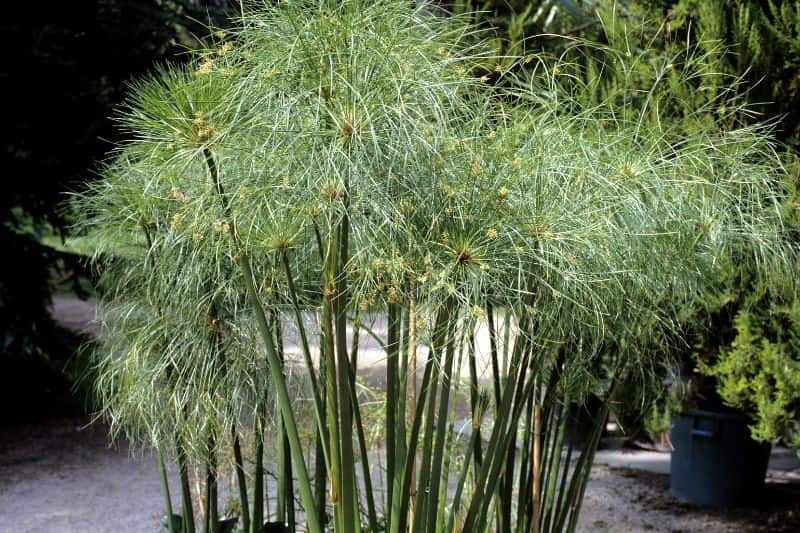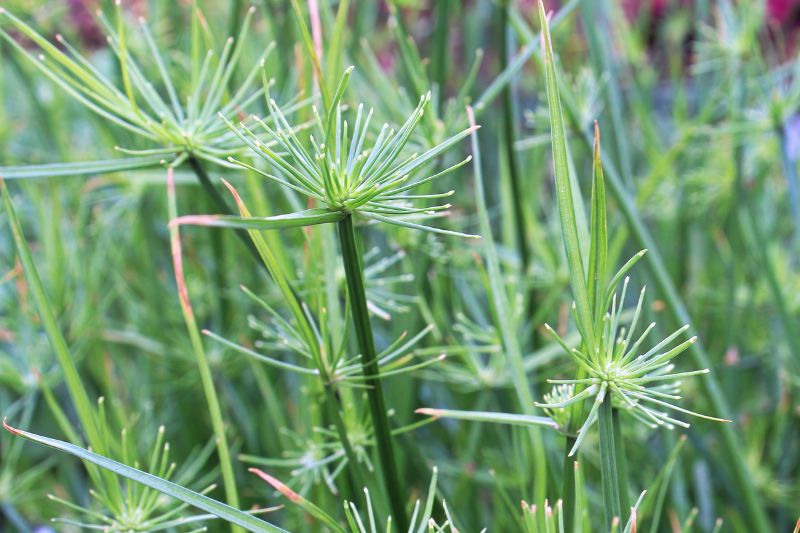Papyrus (Cyperus), known for its elegant silhouette and umbrella-shaped leaves, is a perennial plant that often grows vigorously in wet mediums. Over years, papyrus expands thanks to its rootstocks. Dividing papyrus is an excellent way to rejuvenate plant, limit overcrowding and multiply your young plants to give to friends or beautify other areas of house or garden. Discover, in this tutorial, our tips and step-by-step guide to carry out this operation with care.

Why dividing papyrus?
- Stimulate its growth and longevity: When plant becomes too dense in soil or too cramped in pot, growth can slow and signs of fatigue may appear. Division rejuvenates clumps by encouraging development of new shoots while preventing central decline.
- Multiply your young plants: It is also an excellent method to multiply your young plants, whether to enrich garden or share this magnificent plant with others.
- Prevent diseases: Finally, by aerating roots and reducing overcrowding, you lower risk of diseases linked to excessive water and humidity.
When to divide your papyrus?
Ideal time to divide papyrus is in spring, just before growth resumes. Mild temperatures at this time favour good rootstock recovery.
How to divide papyrus?
Required equipment
- pruning shear well sharpened and disinfected (or a gardening knife).
- A small spade or a spade to lift plant gently.
- gardening gloves (facultative, to protect hands).
- Well-rotted compost or horticultural compost of good quality.
- For repotting into pot:
- A new pot for the division.
- Rich, well-draining potting compost, mixed with some sand to improve water drainage.
Division steps
1- The day before dividing, water papyrus thoroughly. This makes rootstock extraction easier and limits stress for plant.
2- If papyrus is in ground, use spade to lift clump without damaging rootstocks. Dig wide around base. If plant is in a pot, tilt container slightly while gently pulling clump to free it.
3- Gently shake plant to remove excess soil around rootstocks and roots. This helps identify natural division zones. Look where rootstocks ramify. These natural separation points are what you will use to divide plant.
4- Using pruning shear or knife, slice rootstocks to obtain several clumps. Each division should include at least 2 or 3 shoots and a portion of healthy rootstock with intact roots. Remove damaged, rotten or dried rootstock pieces, as well as blackened roots.

Replant division in damp ground or on bank
- Choose a site that is both damp and sunny (or semi-shaded if sun is very intense).
- Loosen soil to about 30 cm depth to allow roots to spread easily.
- If soil is reasonably balanced (neither too heavy nor too free-draining): simply mix a little compost into soil to enrich substrate.
- If soil is heavy and clayey, mix:
- 2/4 of garden soil.
- 1/4 of compost or horticultural compost.
- 1/4 of coarse sand or fine gravel to improve drainage.
- If soil is light and sandy, add:
- 1/2 garden soil.
- 1/2 compost or potting compost to retain more moisture.
- Facultative: A handful of turf.
- Dig a hole large and deep enough to accept roots without bending them.
- Place divided clump in hole, ensuring collar remains slightly above soil surface.
- Fill hole with soil mixture.
- Create small basin around base to retain water during watering.
- Water immediately after planting, soaking soil around roots. Keep soil constantly moist, especially during first weeks, to favour rooting.
Replant division in pot
- Choose pot for new young plant with drainage holes to avoid water buildup. If you wish to keep semi-aquatic aspect, choose a cache-pot or saucer to maintain water reservoir under pot.
- Note: A layer of clay pebbles at pot base can be good idea for many plants, but not always necessary for papyrus which is a semi-aquatic plant.
- Fill half pot with mix of 2/3 rich potting compost (houseplant type) with 1/3 sand or perlite to ensure good drainage. Add some compost to enrich substrate if necessary.
- Place divided rootball in centre of pot, ensuring collar (base of stems) is level with soil surface. Roots should be spread without bending.
- Fill gaps around roots (gently to avoid damage) with prepared substrate, then firm lightly to stabilise plant.
- Add water until it runs from drainage holes. Then fill saucer so plant has access to constant moisture reservoir.
How to care for papyrus after division?
- In pot :
- Place papyrus (mother plant and new young plants) in bright spot, avoiding direct sun during first weeks, to allow gentle recovery.
- Monitor water level in saucer or cache-pot and never let roots dry out.
- It is recommended to keep saucer filled with water to mimic marshy conditions papyrus likes. However, water must be renewed regularly, at least once a week, to prevent stagnation and avoid creating breeding ground for bacteria, fungi or mosquitoes.
- In ground :
- Water regularly, especially during hot or dry periods.
- Apply a layer of mulch around base to conserve moisture and reduce evaporation.
































Feedbacks